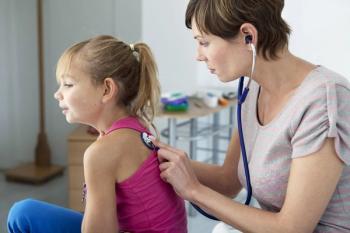
Pediatricians need a better understanding of the effects of early puberty for girls beyond adolescence into adulthood.

Pediatricians need a better understanding of the effects of early puberty for girls beyond adolescence into adulthood.

Outpatient pediatric providers have an essential role in the ongoing monitoring and care of a child with failure to thrive (FTT). Here’s how routine growth assessments help to identify FTT and determine effective multidisciplinary treatment.

Premature cellular aging induced by glucocorticoids during puberty may cause children’s bone loss, osteoporosis, and fracture risk later in life.

For clearer communication, clinicians should say what they mean.

A change in the H1N1 component may have solved efficacy problems from prior formulations of the intranasal vaccine.

New FDA restrictions on medications for children that contain codeine and other opioids aim to prevent cases of misuse, abuse, and overdose.

There are two articles in the March 2018 issue of Contemporary Pediatrics that merit your attention: Dr. Bass’ article on “Is it the flu?” and Ms. Zimlich’s article on “Major vaccines addressed in updated ACIP guidelines.”

Asking a series of questions that can lead to more appropriate preventive medication use can go a long way in improving the health of children with asthma and reduce hospitalizations.

For Contemporary Pediatrics, Dr Bobby Lazzara discusses a case control study published in Pediatrics that looked at whether associations existed between mother receiving influenza and/or Tetanus, diphtheria, and acellular pertussis vaccinations during pregnancy and infant hospitalization or death occurring in the first 6 months of life.

There are some notable revisions in 2018 to recommendations concerning hepatitis B vaccination for newborns and a third dose of mumps-containing vaccines, among others.

Dr. Michael Burke has selected 10 articles published during the last 12 months in Contemporary Pediatrics that he says are worth a second look.

This month, I share several observations from various parental concerns.

For Winter Berry, DO, addressing diaper need in urban Syracuse was just the start of her child advocacy work.

New predictive models may identify and help childhood cancer survivors at a higher risk for ischemic heart disease and stroke.

Wheezing in children is often associated with asthma. However, localized wheezing should alert the clinician that something other than asthma may be present.

When and how to use rapid testing for influenza

Is the overwhelming problem of too many opioid and narcotic pain prescriptions related to the identification of ‘pain’ as the ‘fifth vital sign’? Was the intention for the designation, the ‘fifth vital sign’, an expectation that individuals would be pain free during hospital stays, eg, after a surgical procedure, or after visiting ambulatory centers for an injury?

For Contemporary Pediatrics, Dr Bobby Lazzara discusses a multicenter observational study published in JAMA Neurology that looked at time to treatment in children with refractory convulsive status epilepticus and the impact on mortality.

A new study reveals that folic acid supplementation in mothers treated for epilepsy during pregnancy had children who were more likely to display autistic traits.

Do you talk to your pediatric patients about what they are watching on YouTube and other video sites? Maybe you should be.

The cost of healthcare can be overwhelming for patients’ families. Here are ways to cut parents’ out-of-pocket medical expenses and even help your bottom line.

A 12-year-old girl is referred to the office after a routine dilated eye exam shows unusual retinal lesions. The child has been having headaches for the past 2 years that are described as mostly in the vertex with no other associated vomiting symptoms. Headaches are intermittent and usually relieved with ibuprofen.

Fear of needles may play a larger role than clinicians think in vaccine compliance, both in the childhood years and beyond.

A recent trial showed that a single intravenous infusion of a vector expressing a high specific-activity factor IX gene safely produces a sustained, effective level of factor IX coagulant activity in patients with hemophilia B.

Urinary neutrophil gelatinase-associated lipocalin (uNGAL) is highly sensitive and specific for diagnosing urinary tract infections (UTIs), according to a study in febrile children aged up to 24 months.

Compared with adolescents who use e-cigarettes with relatively low or no nicotine concentrations, those who use e-cigarettes with higher nicotine concentrations are more likely to progress to more frequent and intense combustible cigarette smoking and vaping.

Following an uncomplicated pregnancy, labor, and delivery, a healthy 13-day-old girl presents for evaluation with a 2-day history of firm, violaceous nodules on her mid-upper back and right arm just above the axilla.

A child’s cancer diagnosis presents psychosocial issues that the community pediatrician needs to assess and treat for the total well-being of the child, siblings, and parents.

The progress in treating cancer in children has been revolutionary, and the evidence base for providing long-term psychosocial care for their families has grown as well.

Pediatricians have had concerns about the known risks of marijuana use in children. What’s next for kids with cancer?